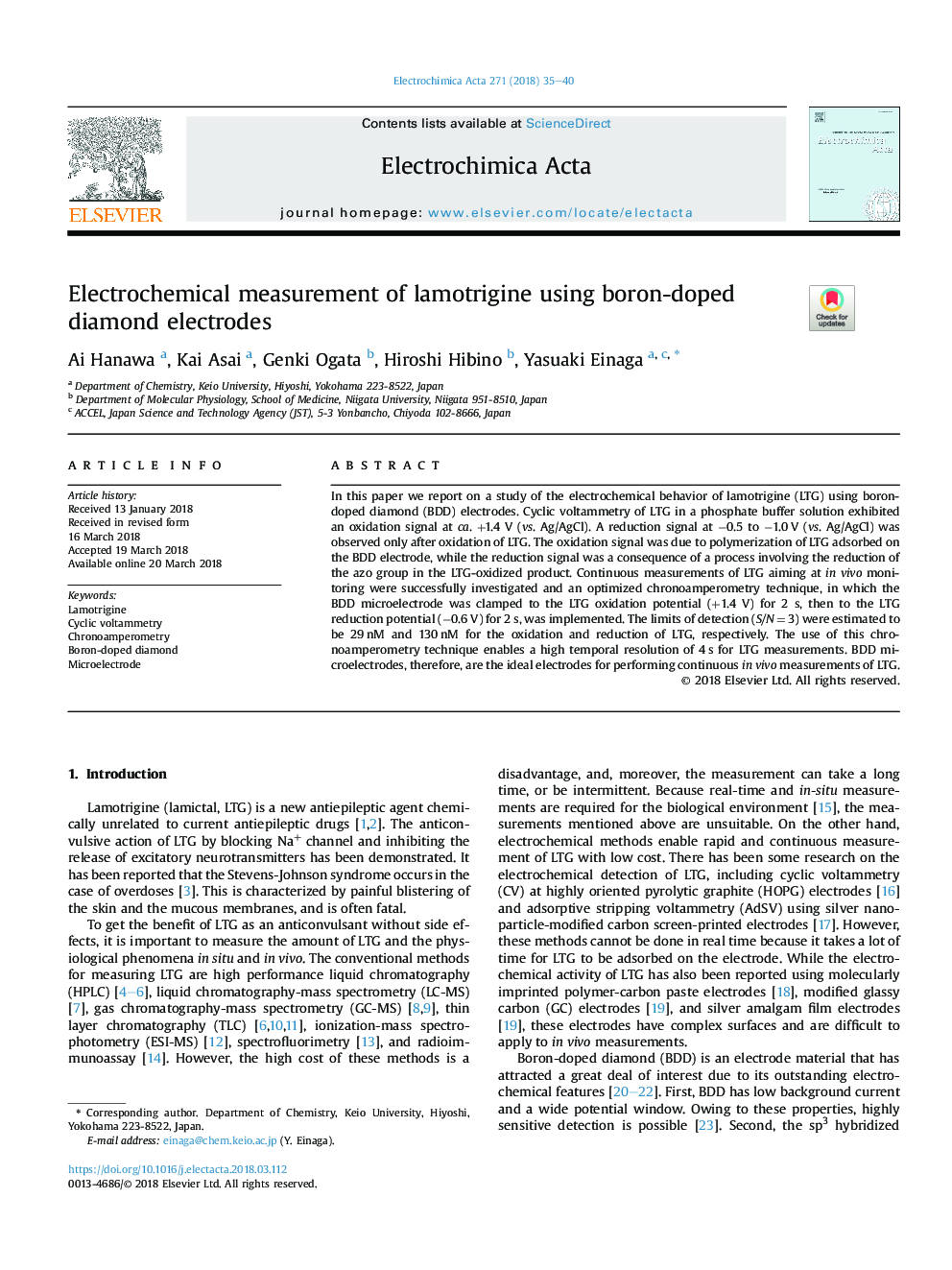| Article ID | Journal | Published Year | Pages | File Type |
|---|---|---|---|---|
| 6603191 | Electrochimica Acta | 2018 | 6 Pages |
Abstract
In this paper we report on a study of the electrochemical behavior of lamotrigine (LTG) using boron-doped diamond (BDD) electrodes. Cyclic voltammetry of LTG in a phosphate buffer solution exhibited an oxidation signal at ca. +1.4 V (vs. Ag/AgCl). A reduction signal at â0.5 to â1.0â¯V (vs. Ag/AgCl) was observed only after oxidation of LTG. The oxidation signal was due to polymerization of LTG adsorbed on the BDD electrode, while the reduction signal was a consequence of a process involving the reduction of the azo group in the LTG-oxidized product. Continuous measurements of LTG aiming at in vivo monitoring were successfully investigated and an optimized chronoamperometry technique, in which the BDD microelectrode was clamped to the LTG oxidation potential (+1.4 V) for 2 s, then to the LTG reduction potential (â0.6 V) for 2 s, was implemented. The limits of detection (S/Nâ¯=â¯3) were estimated to be 29â¯nM and 130â¯nM for the oxidation and reduction of LTG, respectively. The use of this chronoamperometry technique enables a high temporal resolution of 4â¯s for LTG measurements. BDD microelectrodes, therefore, are the ideal electrodes for performing continuous in vivo measurements of LTG.
Related Topics
Physical Sciences and Engineering
Chemical Engineering
Chemical Engineering (General)
Authors
Ai Hanawa, Kai Asai, Genki Ogata, Hiroshi Hibino, Yasuaki Einaga,
